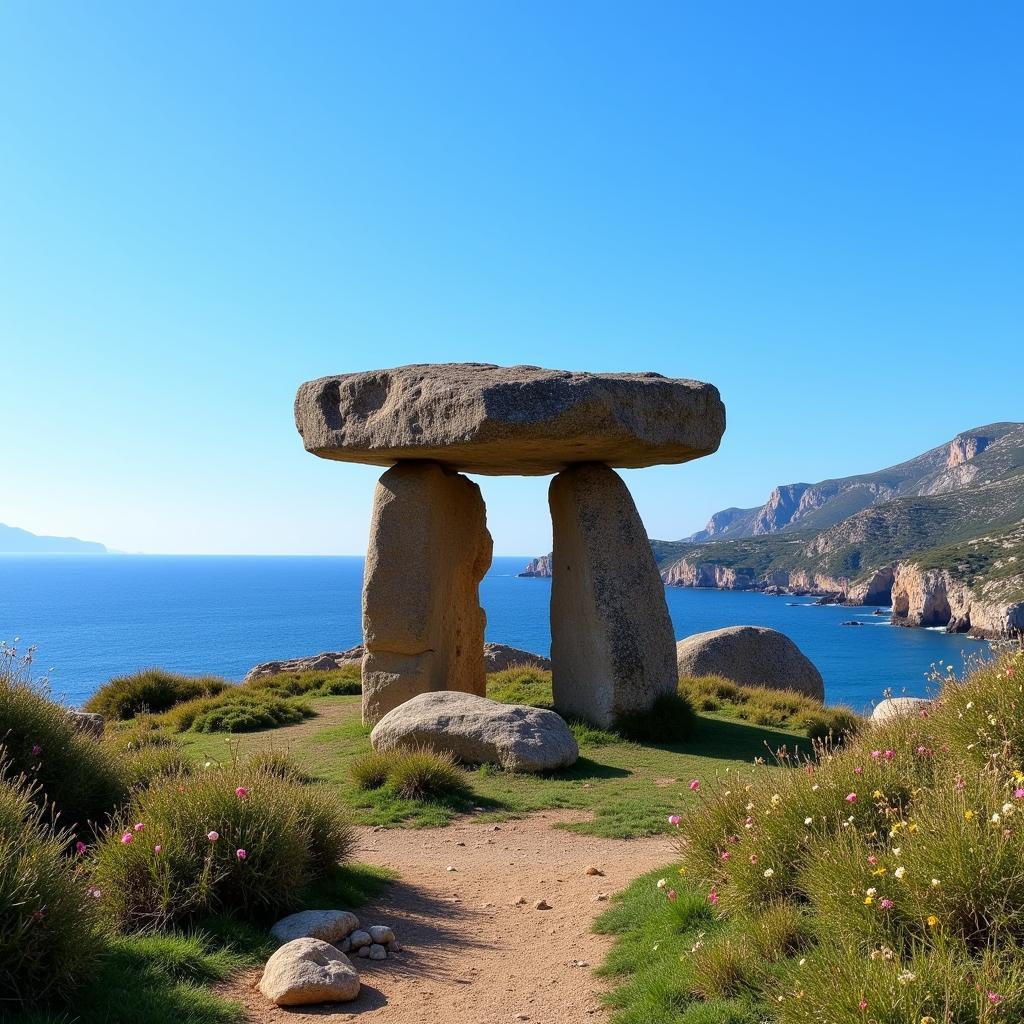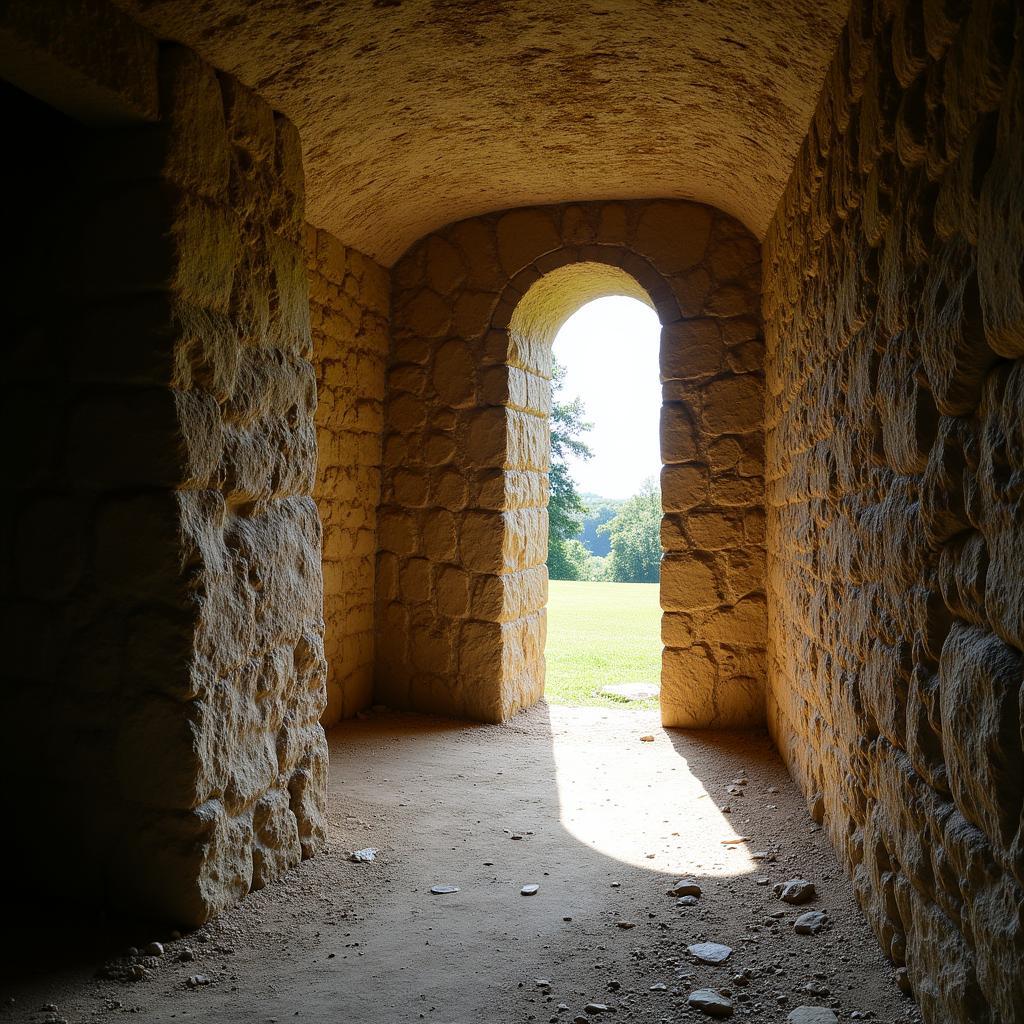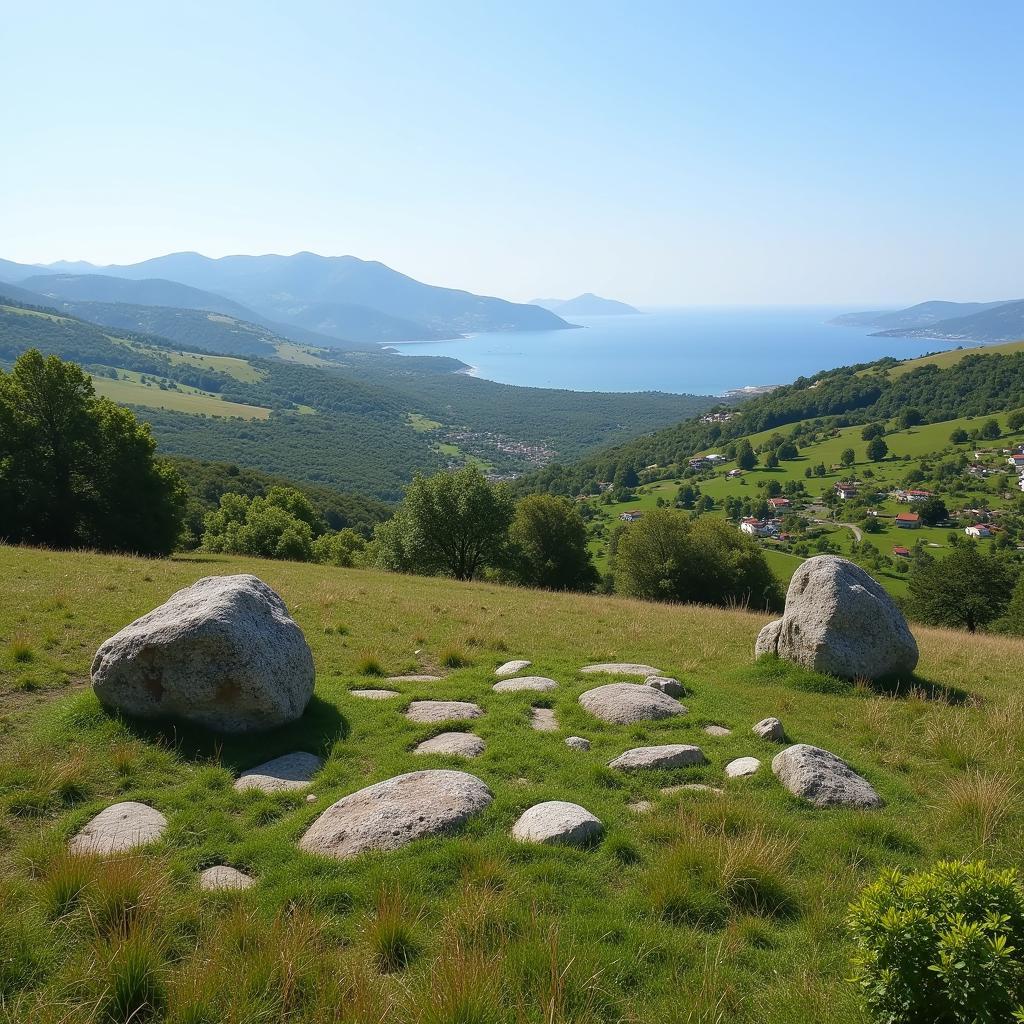Nestled on the sun-kissed shores of the Costa Brava in Spain lies a testament to a time long past: the Dolmen del Cap de l’Home. This megalithic tomb, dating back to the Neolithic period, stands as a silent sentinel, whispering tales of ancient rituals and forgotten lives. It’s a place where history and mystery intertwine, inviting you to step back in time and explore the enigmatic world of our ancestors.
 The Dolmen del Cap de l'Home set against the backdrop of the Costa Brava.
The Dolmen del Cap de l'Home set against the backdrop of the Costa Brava.
A Glimpse into the Past: What is a Dolmen?
Dolmens are megalithic tombs, typically consisting of several large upright stones supporting a capstone, creating an enclosed chamber. They were built by Neolithic societies across Europe, with the Dolmen del Cap de l’Home being a prime example of the “gallery grave” type. These structures served as collective burial sites, often housing the remains of multiple individuals along with their personal belongings.
Dolmen del Cap de l’Home: An Architectural Marvel
What sets the Dolmen del Cap de l’Home apart is its remarkable preservation. The main chamber, formed by seven upright slabs and a massive capstone, remains largely intact, offering a tangible link to the past. The entrance, marked by a carved portal stone, adds to the air of mystery, hinting at the sacred rituals that may have taken place within its walls.
 Inside the Dolmen del Cap de l'Home, sunlight illuminates the chamber.
Inside the Dolmen del Cap de l'Home, sunlight illuminates the chamber.
The Enigmatic Builders: Who Constructed the Dolmen?
The identity of the people who built the Dolmen del Cap de l’Home remains shrouded in mystery. We know they were skilled builders, capable of moving and erecting massive stones with rudimentary tools. They were also likely farmers and herders, with a deep connection to the land and the cycles of nature.
“The dolmens scattered across this region are more than just tombs,” explains Dr. Maria Sanchez, an archaeologist specializing in Neolithic Iberia. “They are expressions of a complex belief system, reflecting a time when the boundaries between the living and the dead were fluid.”
Unveiling the Secrets: Exploring the Site
A visit to the Dolmen del Cap de l’Home is a journey into the heart of prehistory. As you stand within the cool, silent chamber, you can almost feel the presence of the past. The weight of history is palpable, urging you to imagine the rituals, the beliefs, and the lives of the people who once gathered here.
 The picturesque landscape surrounding the Dolmen del Cap de l'Home
The picturesque landscape surrounding the Dolmen del Cap de l'Home
Experience the Magic: Plan Your Visit
The Dolmen del Cap de l’Home is easily accessible, located a short distance from the town of Roses. Its proximity to other historical and natural attractions makes it an ideal destination for a day trip or a longer exploration of the Costa Brava.
The Dolmen del Cap de l’Home stands as a testament to the enduring power of the past. It’s a place where you can connect with your own humanity, marvel at the ingenuity of our ancestors, and experience the magic of history firsthand.
FAQs about Dolmen del Cap de l’Home:
- What is the best time to visit the Dolmen del Cap de l’Home?
The site is open year-round, but spring and autumn offer the most pleasant temperatures for exploring. - Is there an entrance fee to the Dolmen del Cap de l’Home?
Access to the dolmen is free of charge. - Are there guided tours available at the Dolmen del Cap de l’Home?
While there are no official guided tours, information panels at the site provide insights into its history and significance. - Is the Dolmen del Cap de l’Home accessible for visitors with disabilities?
The terrain around the dolmen is relatively flat and accessible. - Are there any other historical sites near the Dolmen del Cap de l’Home?
Yes, the Costa Brava is rich in historical sites, including ancient ruins, medieval castles, and charming villages.
For more information and inspiration for your Spanish adventure, explore other captivating destinations on our website. Discover the hidden gems of Spain with me Stay in Spain.